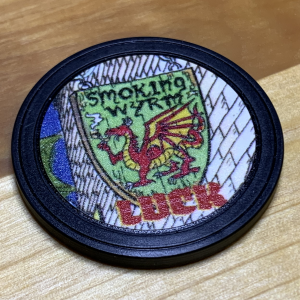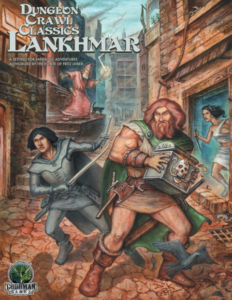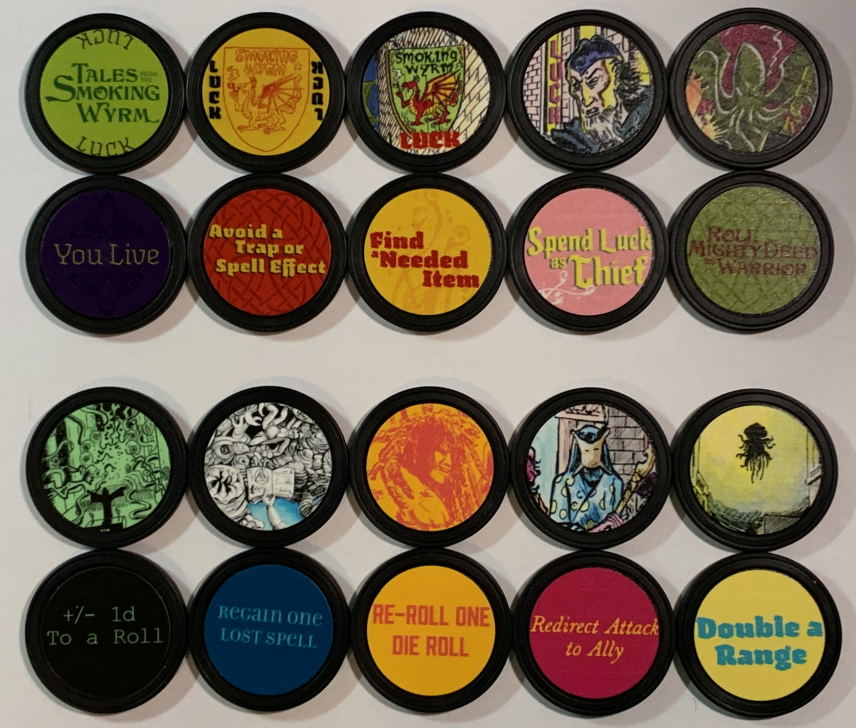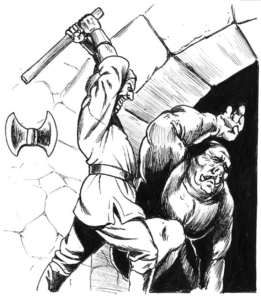 If you are a regular Dungeon Crawl Classics RPG player, you probably know by now what Luck tokens are. But for new players, a quick recap!
If you are a regular Dungeon Crawl Classics RPG player, you probably know by now what Luck tokens are. But for new players, a quick recap!
Luck as a mechanic has been in DCC since the game’s release. Every class in the games has an ability that uses Luck in some way—wizards apply it their spell checks, warriors apply it to one of their weapon’s attack rolls, etc. But Luck itself can be “burned” to add modifiers to a die roll, improving one’s chance of success. And of course, one can have good or bad luck. But unlike other ability scores, Luck that has been sacrificed can’t be healed or restored—there are exceptions, of course, but when have thieves ever played by the rules? Thus, many players seem reluctant to sacrifice Luck.
Enter “Fleeting Luck”

The most excellent Lankhmar boxed set is DCC’s take on the world of Newhon, the setting for Fritz Leiber’s tales of Fafhrd and the Gray Mouser. We will allow the boxed set to speak for itself:
The gods of Nehwon are capricious at best. The mortals scurrying about the world are little more than afterthoughts to the divine mind—as long as their prayers keep flowing! When they do take interest in the lives of mankind, it is often for entertainment. While one struggles to keep the gods pleased, one can hope to benefit from their benevolence. But displease the fickle Powers and his luck will turn faster than a Whore Street doxie’s heart.
To represent these shifting fortunes, DCC Lankhmar uses fleeting Luck, a form of Luck that PCs accrue in addition to their normal Luck stat, but which can also vanish in the blink of an eye—or the roll of a die. Fleeting Luck is spent as normal Luck, but is far easier to earn.
Fleeting Luck can be tracked in whatever way is convenient for the judge and players, whether that be as simple as marking it on one’s character sheet, or using physical items that the judge passes out—beads, coins, poker chips, etc. Goodman Games has produced some beautiful poker chip style tokens using the Doug Kovacs artwork in the box set, and we here at the Smoking Wyrm wanted to offer something special to our Kickstarter backers, so we too have produced our own Luck tokens!
Wyrm Tokens

Row 1: Kickstarter Issue #1 obverse; Row 2: Kickstarter Issue #1 reverse; Row 3: Kickstarter Issue #2 obverse; Row 4: Kickstarter Issue #2 reverse
Here at the Smoking Wyrm, we always love to tinker… What you see above is the 10 different tokens we’ve created for our Kickstarters. Normally, Luck tokens simply indicate the availability of Fleeting Luck, but we wanted to add a little extra kick to the Wyrm’s tokens. Describing a new rule in the space of a poker chip is a bit of a challenge, so here is what the Wyrm’s intent was with the rules you see above:
- You Live: Hopefully self-explanatory!
- Avoid a Trap or Spell Effect: I pulled back from that pit trap at the last instant! I ducked behind that table to avoid the fireball! This isn’t just automatically making a saving throw, but completely avoiding the effect. It is within reason for the judge to rule, however, that if an effect is ongoing (for example, a choking cloud spell), then the character will be affected if he remains in the area.
- Find a Needed Item: Need a piton? There’s one tucked in my belt! Need some rope? Oh, look—there’s a coil tucked behind the bedroll on my backpack! These should never be magic items, but rather, mundane pieces of equipment that the character could use right at that moment (but does not have).
- Spend Luck as a Thief: Spend the token to add a Luck die (as if a thief the same level as your character) to any die roll for which you could normally add Luck.
- Roll a Mighty Deed as a Warrior: Spend the token to roll a Mighty Deed die (as if a warrior the same level as your character). Add the deed die to your attack roll, and just like a Mighty Deed, if the result is 3 or above, and the attack lands, the deed succeeds!
- +/- 1d to a Roll: Increase or decrease a die you are about to roll by one die along the dice chain, whatever the player decides is more advantageous.
- Regain 1 Lost Spell: Cleric, wizard, or elf, get back one spell lost earlier as if you never lost it in the first place.
- Re-roll 1 Die Roll: Action die, damage die, deed die, doesn’t matter!
- Redirect Attack to Ally: If the ally is willing, and also within attack range of your foe, spend the token to redirect the attack to the ally. The foe’s attack roll does not change, but is now compared to your ally’s Armor Class instead.
- Double a Range: Anything that has a range can be doubled. An arrow fired from a shortbow normally has a range of 50/100/150; spend this Luck token and the range for that shot is now 100/200/300. For a spell, our intent is only that ranges are doubled, not areas-of-effect; so for example, a fireball resulting from a spell check of “20” would now have a range of 240′ (instead of 120′), but would still only affect a radius of 20′.

Fumbles suck… (Image by Jim Holloway)
Additionally, these tokens are not intended to replace other Luck tokens, but rather, to supplement them. We suggest that our tokens should be kept as a low percentage of the overall number of Luck tokens in use—the Wyrm’s home group uses a 5-to-1 ratio, i.e., 5 “plain” Luck tokens to each 1 of our custom Luck tokens. All the tokens are placed in a bag and mixed well, and at the start of the session, or whenever a player rolled a natural 20, a random token was drawn. The token can then be spent as a “normal” Luck token, or the special rule can be invoked when appropriate (for example, using You Live when it is not your turn). Spent tokens, or those lost when someone at the table rolls a natural 1 then go back in the bag to (hopefully) be used again!
